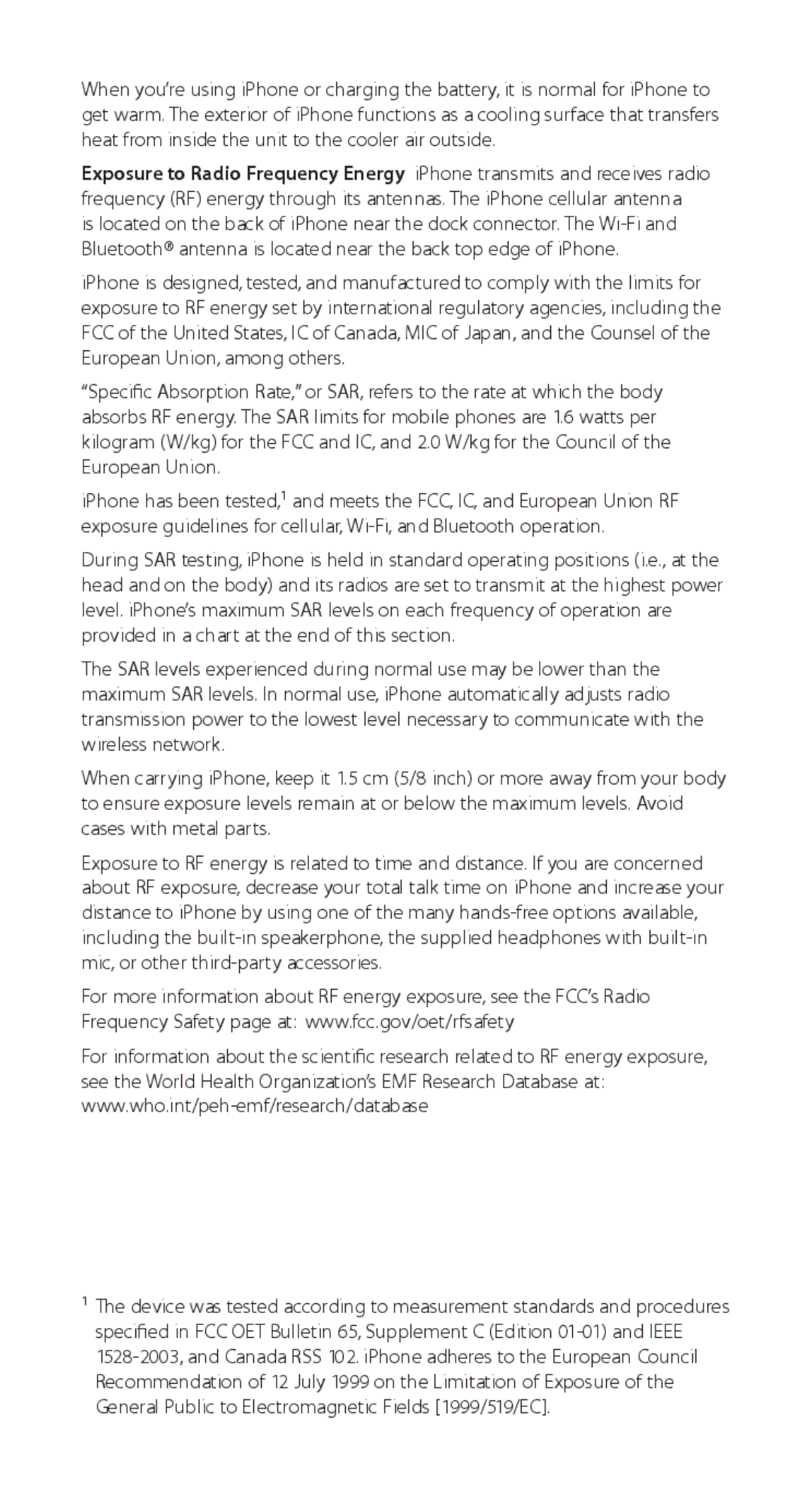When you’re using iPhone or charging the battery, it is normal for iPhone to get warm. The exterior of iPhone functions as a cooling surface that transfers heat from inside the unit to the cooler air outside.
Exposure to Radio Frequency Energy iPhone transmits and receives radio frequency (RF) energy through its antennas. The iPhone cellular antenna
is located on the back of iPhone near the dock connector. The
iPhone is designed, tested, and manufactured to comply with the limits for exposure to RF energy set by international regulatory agencies, including the FCC of the United States, IC of Canada, MIC of Japan, and the Counsel of the European Union, among others.
“Specific Absorption Rate,” or SAR, refers to the rate at which the body absorbs RF energy. The SAR limits for mobile phones are 1.6 watts per kilogram (W/kg) for the FCC and IC, and 2.0 W/kg for the Council of the European Union.
iPhone has been tested,1 and meets the FCC, IC, and European Union RF exposure guidelines for cellular,
During SAR testing, iPhone is held in standard operating positions (i.e., at the head and on the body) and its radios are set to transmit at the highest power level. iPhone’s maximum SAR levels on each frequency of operation are provided in a chart at the end of this section.
The SAR levels experienced during normal use may be lower than the maximum SAR levels. In normal use, iPhone automatically adjusts radio transmission power to the lowest level necessary to communicate with the wireless network.
When carrying iPhone, keep it 1.5 cm (5/8 inch) or more away from your body to ensure exposure levels remain at or below the maximum levels. Avoid cases with metal parts.
Exposure to RF energy is related to time and distance. If you are concerned about RF exposure, decrease your total talk time on iPhone and increase your distance to iPhone by using one of the many
For more information about RF energy exposure, see the FCC’s Radio Frequency Safety page at: www.fcc.gov/oet/rfsafety
For information about the scientific research related to RF energy exposure, see the World Health Organization’s EMF Research Database at:
1The device was tested according to measurement standards and procedures specified in FCC OET Bulletin 65, Supplement C (Edition
